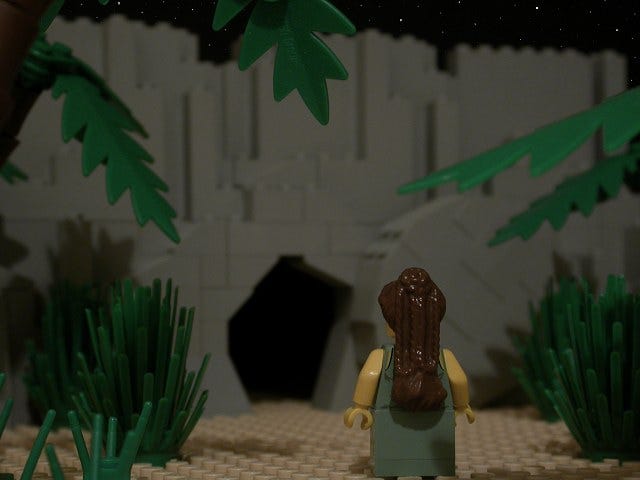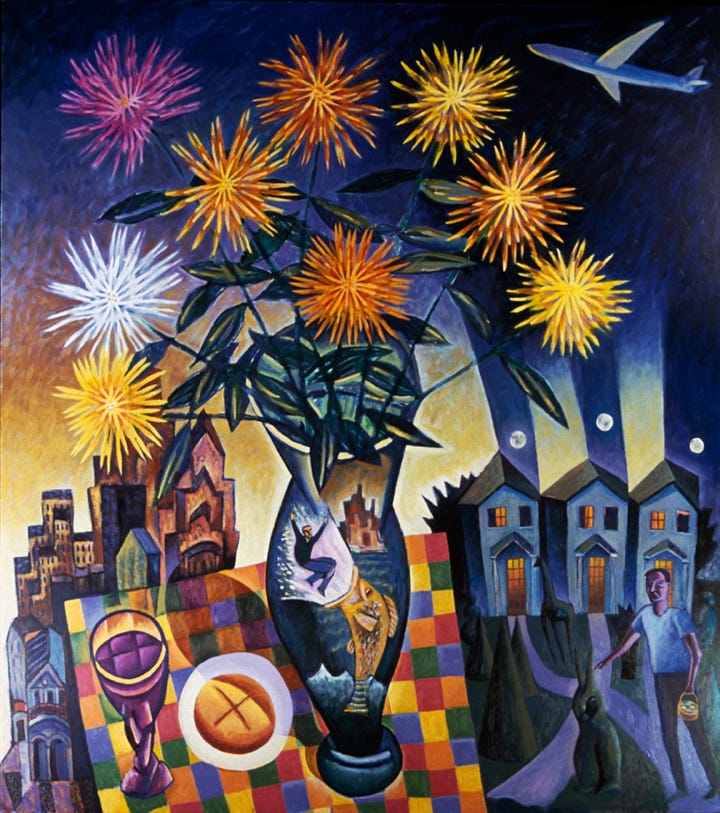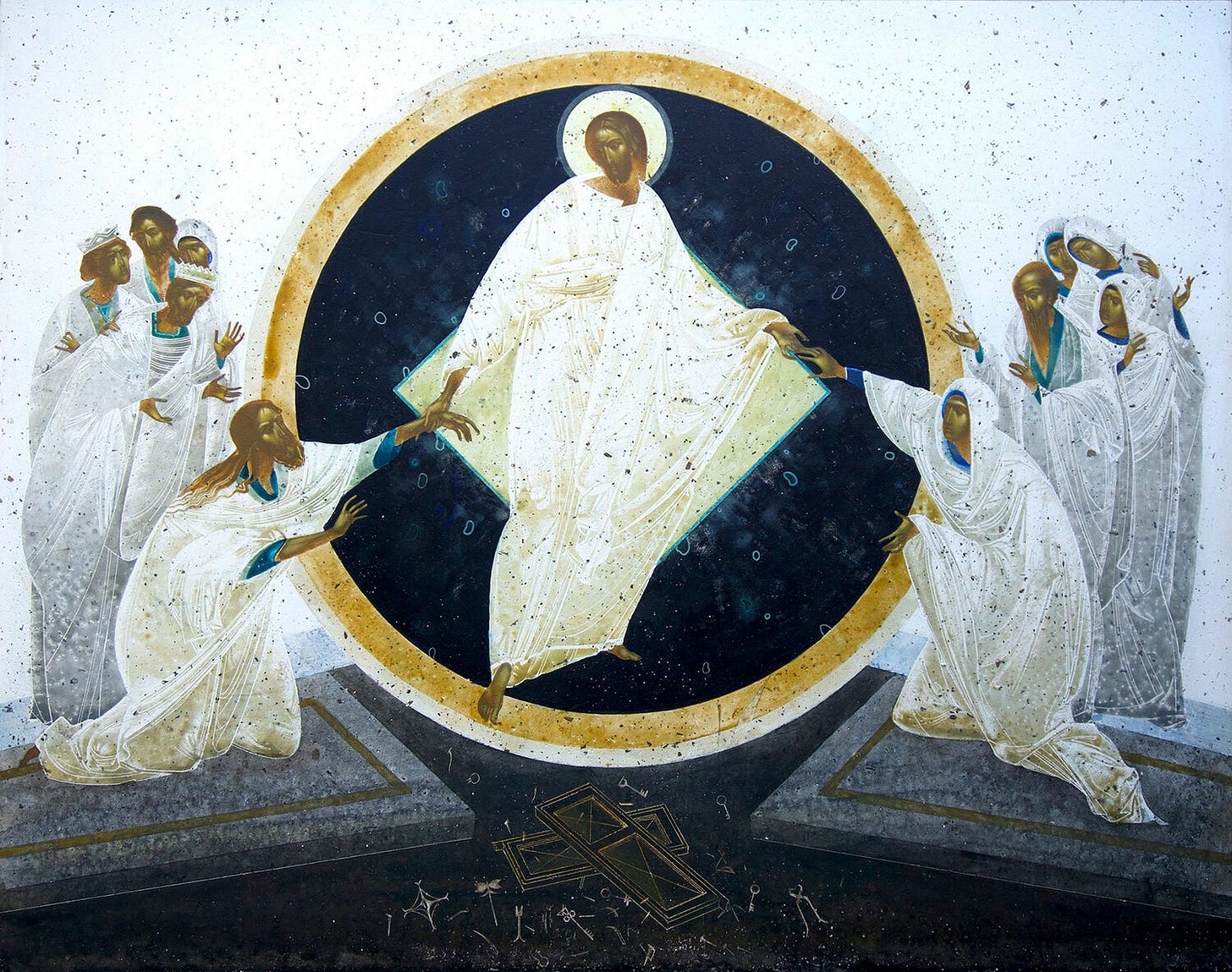Symbols of Life
The rising of the sun revealed the victory of the Son, living, breathing, with no need for his burial clothes.

Being the children of a pastor has put a stop to their dreams of a jet-setting Spring Break. While Pastor Jeff was busy restringing his guitars this past week, I took my kids to the Tidal Basin for a picnic. When our oldest asked me where we were going for Spring Break earlier this month, my response was not what he was expecting. “We’re going to church,” I told him as I crushed his dreams of a great story to tell his friends.
As we sat along the Tidal Basin eating our homemade sandwiches and giving into the begging squirrels who wanted us to share our spread, I realized we live in Grand Central Station for storytelling symbols.
Washington, D.C., Arlington, and even the heathen land of Alexandria is full of symbols that tell the story of those who came before us and how our communities were formed. The legacy we desire to leave to our children and their children.
Along the National Mall, from Lincoln to Capitol Hill, over 100 monuments on 1000 plus acres of land, each telling a unique story about a person, group of people, or us.
In the 1930s, a wall was built a few blocks from here. A “segregation wall” was designed to keep Black citizens out of the newly built Woodlawn subdivision. Large sections of the wall were not removed until 1966. Portions of the Halls-Hill wall remain today, telling the story of our community’s past so that the children of our community remember how symbols can become instruments of sin and even death.
As we began Advent in the dark with the words of the prophet Isaiah, “The people walking in darkness have seen a great light; on those living in the land of deep darkness, a light has dawned,”[i] today, we begin the story of Easter in the dark, “Early on the first day of the week, while it was still dark, Mary Magdalene went to the tomb and saw that the stone had been removed from the entrance.”[ii]
Mary was heading to Jesus’ tomb to mourn. Saint Luke tells u Mary brought “fragrant spices”[iii] with her. She was not expecting what Jesus had told her and his other followers would happen.
“Destroy this temple, and I will raise it again in three days,”[iv] John 2:19.
Or, Mark 14:58, “I will destroy this temple made with human hands and in three days will build another, not made with hands.”
Mark 8:31, “He then began to teach them that the Son of Man must suffer many things and be rejected by the elders, the chief priests and the teachers of the law, and that he must be killed and after three days rise again.”[v]
Quoting Psalm 118, Jesus said, “The stone the builders rejected has become the cornerstone;
the Lord has done this, and it is marvelous in our eyes.”[vi]

Over and over again, Jesus, using symbols familiar to his audience, told those around him precisely how the story would end, and still, Mary went to the tomb on the third day in darkness.
Mary had been with Jesus from the Mount of Olives to the upper room, to the sham of a trail. She walked alongside Jesus as he carried his cross – a symbol telling the story of the might of Rome – to a place called “The Skull.”
Mary saw the darkness of Sin and Death with her own eyes, and now she weeps for what is gone and what could have been.

From chapter one through our reading today, the Gospel of John tells a story rich with symbols to aid the reader in connecting with each movement of Jesus.
“In the beginning was the Word, and the Word was with God, and the Word was God. 2 He was with God in the beginning. 3 Through him all things were made; without him nothing was made that has been made. 4 In him was life, and that life was the light of all mankind. 5 The light shines in the darkness, and the darkness has not overcome it.” [vii]
Jumping back, way back, to the Book of Genesis, we learn that the Light shown in the darkness was the Light that cast out the darkness when God created the heavens and earth and everything in between.
“In the beginning, God created the heavens and the earth. 2 Now the earth was formless and empty, darkness was over the surface of the deep, and the Spirit of God was hovering over the waters.
“3 And God said, ‘Let there be light,’ and there was light. 4 God saw that the light was good, and he separated the light from the darkness.”[viii]

Light and darkness, symbols of the divine and our separation from God, pervade the Gospel of John.
Using light and darkness, Jesus details who he is and the implications of following him.
“I am the light of the world. Whoever follows me will never walk in darkness but will have the light of life.”[ix]
All the way up to this past Thursday, as Judas prepared to betray Jesus, light and darkness pervade our Holy Scriptures.
“So Jesus told him, ‘What you are about to do, do quickly.’ 28 But no one at the meal understood why Jesus said this to him. 29 Since Judas had charge of the money, some thought Jesus was telling him to buy what was needed for the festival or to give something to the poor. 30 As soon as Judas had taken the bread, he went out. And it was night.”[x]
As we moved through Holy Week, the darkness became more intense. If we stopped on Friday afternoon or even Saturday morning, the darkness of Sin and Death would be victorious. Symbols like a rooster crowing, pieces of silver, nails, and a cross would hold a heavier weight if any weight at all. If the story of Jesus stopped short of Easter morning, he would not be a name remembered and worshiped today. Had the story stopped with a victory for Sin, and Death Jesus would be just another of the tens of thousands of people killed on a cross by the Roman Empire.
But that is not how the story ends.
Today is a celebration of the Gospel Good News that Sin and Death do not hold the last word. The very thing Mary went to the tomb to confront and mourn is no more because of Christ.
Easter is not just the celebration of the tomb being empty. In the crucifixion and resurrection of Jesus Christ, we see how the darkness of this world has been and will be overcome and ultimately annihilated by God.
Mary arrived in the garden at night expecting to weep and mourn. But the rising of the sun revealed the victory of the Son, living, breathing, with no need for his burial clothes. Jesus’ physical presence and emptiness of the tomb echoed what he said to Mary’s sister, Martha, at the graveside of their brother Lazarus, “I am the resurrection and the life. The one who believes in me will live, even though they die; 26 and whoever lives by believing in me will never die. Do you believe this?”[xi]
Do you believe this?
Do you believe this is a story with its symbols, darkness, and light?
Whether they fully understood what had happened, each of the disciples at the tomb responded as Martha did, “Yes, Lord, believe that you are the Messiah, the Son of God, who is to come into the world.”[xii]
Do you believe this?
Let our answer be hers and theirs, and in believing, receive eternal light and life, gifts in Christ’s name.[xiii]
Alleluia! Alleluia! The Lord is risen indeed! Alleluia! Alleluia! Amen.
[i] Isaiah 9:2
[ii] John 20:1
[iii] Luke 24:1
[iv] John 2:19
[v] Mark 8:31
[vi] Matthew 21:42
[vii] “John 1:1-5
[viii] Genesis 1:1-4
[ix] John 8:12
[x] John 13:27-30
[xi] John 11:25-26
[xii] John 11:27
[xiii] Rutledge, Fleming. The Undoing of Death.Eerdmans. 2002.









